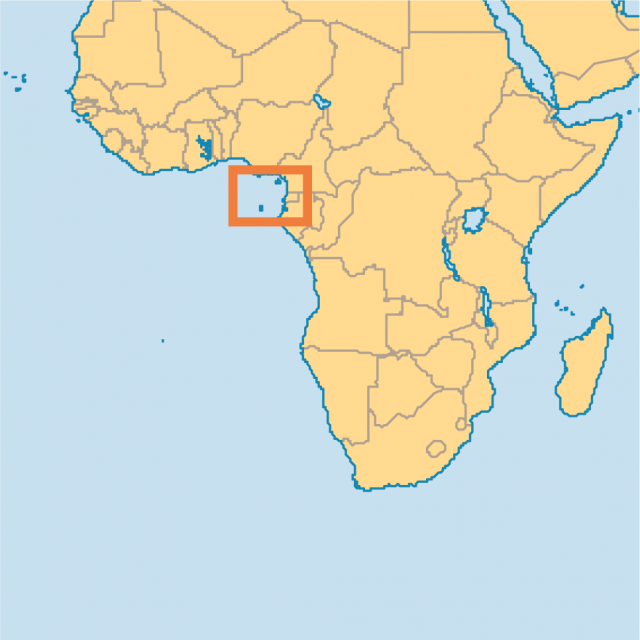Sao Tome and Principe
Area 386 square mi (1,001 square km)
Population 186,300 (2014)
Capital Sao Tome
Highest Point 6,640 ft (2024 m)
Lowest Point 0 m
GDP $337.4 million (2014)
Primary Natural Resources bananas, cocoa, coconuts, coffee, fish.
ONE OF AFRICA'S smallest countries, the Democratic Republic of Sao Tome and Principe consists of two main islands (Sao Tome and Principe) of volcanic origin with some smaller islets. Sao Tome lies approximately 180 mi (289 km) from the coast of GABON and is crossed by the equator at the island's southern tip. Principe is located about 160 mi (257 km) from the coast of EQUATORIAL GUINEA. Sao Tome's geography consists of a dense and mountainous jungle, where large plantations have been established that produce sugar, coffee, and cocoa. Principe consists of sharp mountains. Other islands included in the republic are Pedras Tinhosas and Rolas.

The climate is tropical with two rainy seasons in March and September. Discovered and claimed by PORTUGAL in 1470 to 1477, the islands' history of occupation and development is nontraditional and has impacted current economic status and development efforts. When the Portuguese explorers discovered the islands, they claimed to find no inhabitants, and as a result, the islands became an essential point in the slave trade. With the influx of slave labor, a plantation-based economy was established. People were brought as slaves from a number of different countries (BENIN, Gabon, CONGO, ANGOLA, MOZAMBIQUE, CAPE VERDE). Over time, the slave population was further divided between those working on the plantations of Sao Tome and those working on Principe.
Intensive cultivation of the land by slave labor made the islands a major producer of sugar during the 17th century, but production declined until the mid-1800s, when sugar cane was replaced by new crops of cocoa and coffee, which brought new prosperity to the islands. The islands of Sao Tome and Principe were the world's largest producer of cocoa in 1908, and the cocoa crop is still the most important today. Working conditions for laborers were inhumane, and in 1909, British and German chocolate manufacturers boycotted the Sao Tome cocoa industry in protest.
The political history of the islands was stable until recently. From the discovery of the Islands until 1975, the Portuguese were in charge of the government. After an unsuccessful revolt in 1953, the citizens of the islands continued to request independent rule from Portugal. On July 12, 1975, this request was granted, and Manuel Pinto da Costa, leader of the only legal political party (Movement for the Liberation of Sao Tome and Principe, MLSTP), became president and Miguel Trovoada, prime minister. Da Costa ruled the islands from 1975 to 1991.
Protests rose throughout the 1990s over unemployment and high inflation. Businessman Fradique de Menezes, a wealthy cocoa exporter, was elected to the presidency in July 2001 with 65 percent of the votes. De Menezes, the son of a Portuguese father and Sao Tomeari mother, became the country's third president. A military coup in July 2003 attempted to overthrow his government while the president was on a private visit to NIGERIA. Major Fernando Pereira, head of the country's military school, seized power, but resigned a week later under international pressure and de Menezes returned to the position of president. Eventually, de Menezes returned to Sao Tome after an agreement to reestablish democratic rule was reached with the coup leaders.
In the 1990s, the government initiated a process of land tenure reform and privatization, which has resulted in a mixture of small, medium, and large land holdings. The country's economy had become increasingly dependent on cocoa since its independence, and in the 1990s cocoa production had reached its lowest level from drought and mismanagement. However, the redistribution of the land holdings assisted in strengthening the cocoa prices, which helped improve export earnings.
The recent discovery of oil in the Gulf of Guinea is likely to have a significant impact on the country's economy as Sao Tome and Principe have been attempting to reduce their dependence on the cocoa crop. The government has been encouraging economic diversification and is set to exploit oil off the country's coast.